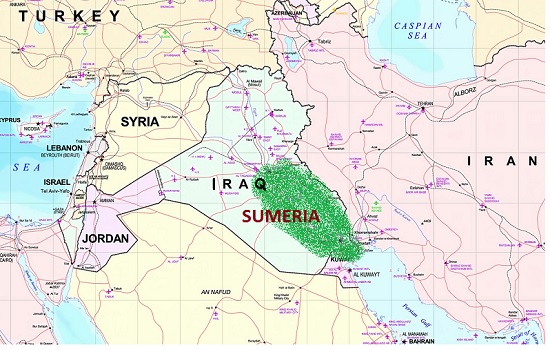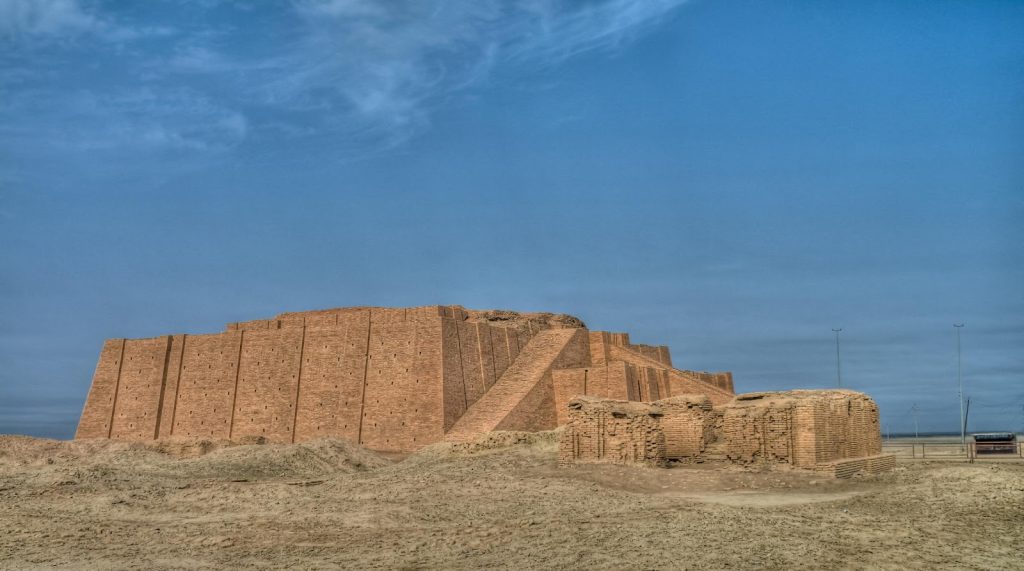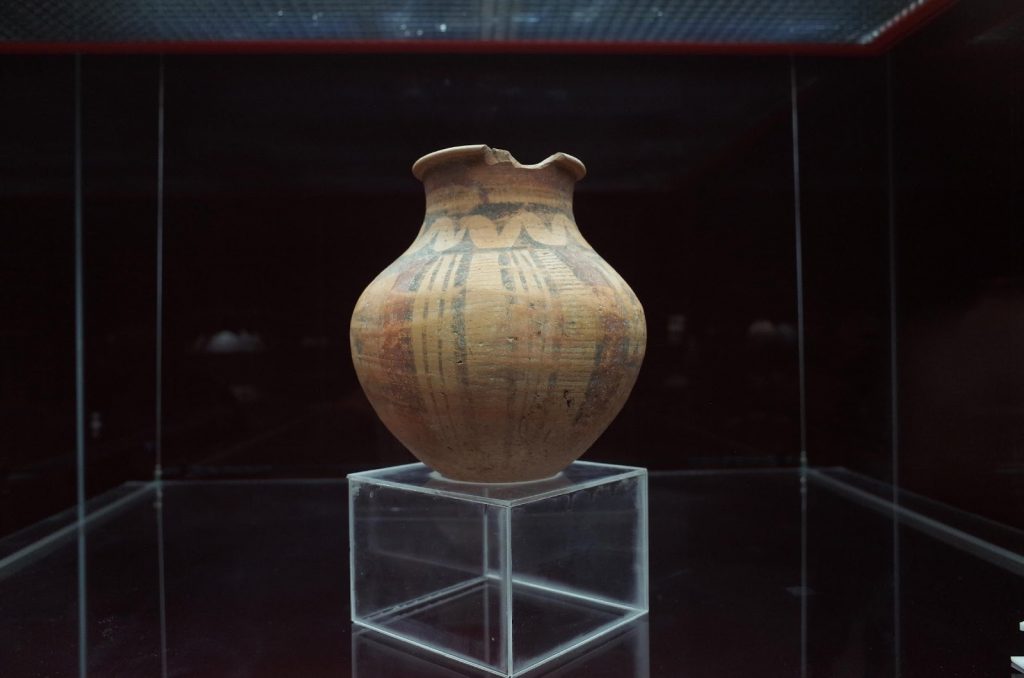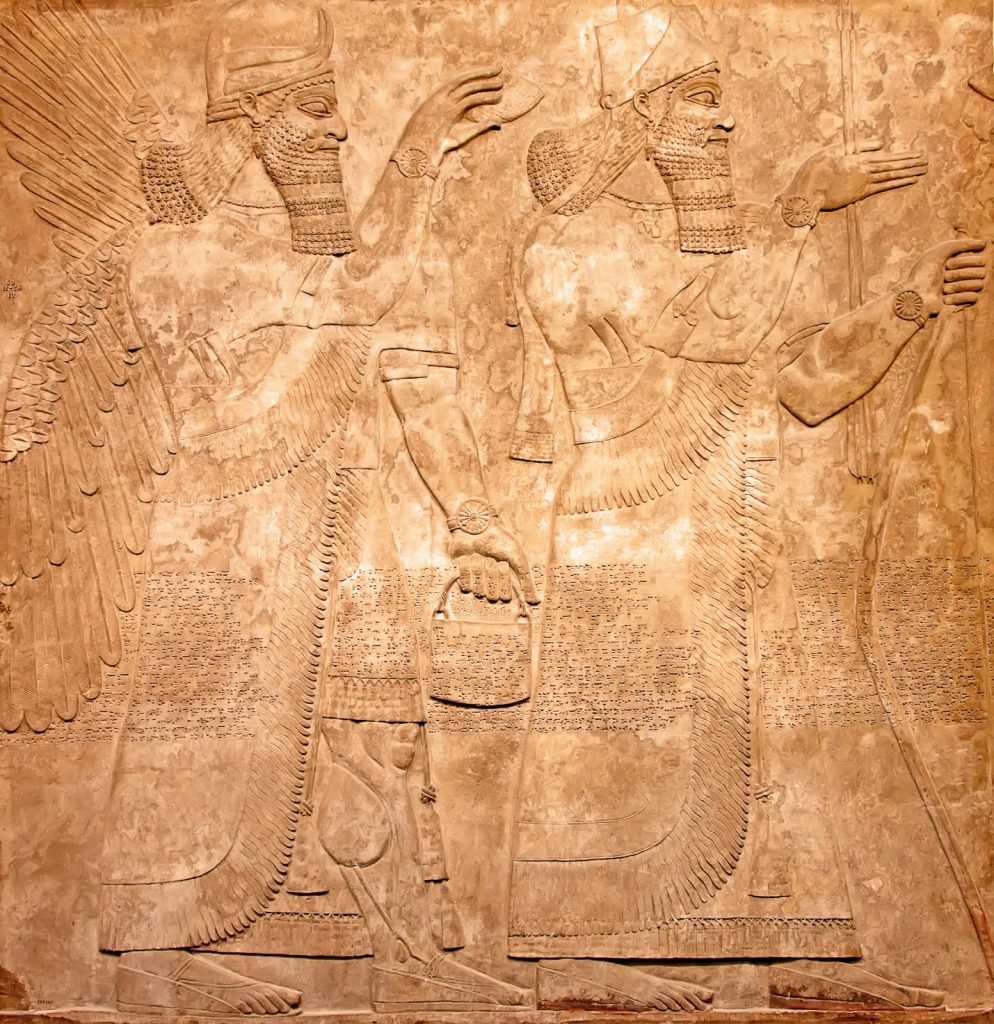This is the fourth in a seven-blog series on history. In this blog, I describe some of the African impacts on the Sumerian Civilization.
What was the Sumerian Civilization?
Sumeria, Indus Valley, and Ancient Egypt were the first societies to manifest all the features to qualify as a civilization.

The term Sumer refers to the region where the Sumerian civilization was located in southern Mesopotamia between the Tigris and Euphrates rivers in present-day Iraq. Sumeria is the term for the collection of city-states in Sumer. The term Sumerian refers to the people, language, and culture of the Sumerian civilization.
Of the major civilizations in the Mesopotamian region – the Sumerian, Assyrian, Akkadian, and Babylonian – the Sumerian was the oldest.
From its beginnings as a collection of farming villages around 5000 B.C.E, to the founding of Sumeria around 3200 B.C.E, through its conquest by Sargon of Agade around 2370 B.C.E. and its final collapse under the Elamite invasion and Amorite migration around 1750 B.C.E. the Sumerians influenced later cultures and civilizations such as the Babylonians. These other cultures and civilizations adopted many Sumerian religious beliefs and Sumerian cuneiform. Some Sumerian stories are similar to stories in other cultures and religions. For example, the Sumerian flood story is similar to the flood story in the Jewish book of Genesis.
Facts about the Sumerian Civilization
Sumerians spoke a non-Semitic language. Some anthropologists state the language is a language isolate that “belongs to no known language family.”
The three periods of the Sumerian civilization were the: 1) Ubaid period: 6500–4100 B.C.E.; 2) Uruk period: 4100–2900 B.C.E.; and 3) the Early Dynastic period: 2900-2334 B.C.E.
During the Ubaid period, the first inhabitants of what would become Sumeria were known as the Ubaid people. The Ubaid were farmers and had many stable and prosperous settlements. These isolated farming communities started between the Caspian Sea, the Hindu Kush, and Kopet Mountains in Turkmenistan.
During the Uruk period, Sumeria was made up of groups of walled city-states, with small villages built around them. Each of these cities usually followed the same basic layout, with a walled metropolis containing a Ziggurat, a religious structure (temple) having the form of a terraced pyramid of successively receding stories, at the center. By 3000 B.C.E., as many as twelve cities were in existence, with some as large as 80,000 or more people. The five major Sumerian cities and their modern names, shown in parentheses are: 1) Uruk (Warka); 2) Kish (Tell Uheimir and Ingharra); 3) Ur (Tell al-Muqayyar); 4) Nippur (Afak); and 5) Lagash (Tell al-Hiba). To date, nineteen principal cities have been excavated. All of them are concentrated on and around the branches and canals of the Euphrates River.

During the Early Dynastic period Sumeria was a continuous civilization until about 2300 B.C.E. when it was invaded. By 1750 B.C.E. it was absorbed into other Mesopotamian civilizations.
The Sumerian language does not resemble that of the surrounding populations. In addition, Sumeria first appears with language, technology, and writing systems in full-form. And, while there are puzzling aspects of Sumeria we may never understand, researchers like Dr. Catherine Acholonu believe the Sumerians originated from an African area near the Niger River.
Important Inventions of the Sumerian Civilization
Among the key inventions of the Sumerian civilization were:
1. Tools: The Sumerians were among the first to use bronze by mixing copper with tin that led to the inventions of metal tools like chisels and hammers. Other Sumerian tools were saws, braces, bits, nails, pins, rings, hoes, axes, knives, lance points, arrowheads, swords, glue, daggers, waterskins, bags, harnesses, armor, quivers, scabbards, boots, sandals (footwear), and harpoons.

2. The wheel: Sumerians developed potter’s wheels to create symmetrical clay products. It led to mass-produced pottery, and the creation of large numbers of items like workers’ rations containers, wheeled vehicles, and mill wheels.
3. Transportation: Sumerians created the first sailboats and used them to establish trade relationships with other cities and countries.
4. Astrology: As Sumerians discovered stars and planets moved in regular patterns across the sky, they felt it was a secret code of the gods. This led to very detailed astronomical and mathematical information, and a belief that from it one could glean knowledge of the future.
5. Astronomy: Only fragments of Sumerian astronomy knowledge are visible in Babylonian records that use Sumerian names for stars. Sumerians were among the first astronomers. They had a heliocentric view of the solar system containing the five planets visible to the naked eye.
6. Code of Law: Sumerians developed the first known legal system with the Code of Ur Nammu. It listed laws in a cause-and-effect format (i.e. if this crime then that punishment), introduced the concept of fines as a form of punishment, and identified murder and rape as capital offenses.
7. Business and Trade: The creation of small cylindrical seals, which bore the signature of a person, were used to record transactions. This also showed that the people of Sumeria were adept with credit, contracts, business partnerships, and loans.
8. The writing systems of Sumeria and Ancient Egypt are the oldest known written languages. Sumerian pictograph writing started with rough sketches of goods that evolved into the cuneiform writing system. Around 2600 B.C.E. this writing system was applied to a wide range of disciplines, to include epic stories like the Gilgamesh epic.
9. Sumerians created molds to make bricks out of clay. produced them in large amounts, and put them together on a large scale.

10. Textile Factories: Sumerians were the first Middle Easterners to gather wool and weave fabric for clothing on an industrial scale, turning their temples into huge textile factories – the predecessors of modern manufacturing companies.
11. Metallurgists: Sumerians were among the first to use copper to make useful items, like spearheads and chisels. They also used it in art like dramatic panels depicting fantastical animals such as an eagle with a lion’s head.
12. Agriculture: Sumerians created the first plows, produced a manual to instruct farmers on using various types of plows, used irrigation with complex canal systems with dams whose gates could be opened or closed to regulate the flow of water, used the rich silt in the Tigris and Euphrates river overflows to water and fertilize their farm fields, and used oxen as beasts of burden, and used donkeys or equids as primary transport animals.
13. The Sumerians created a sexegesimal numeral system around 3000 B.C.E. with a base number of 60. The sexagesimal system became the standard number system in Sumeria and Babylonia. It led to the 360 degrees of a circle and the clock with 60 seconds, 60 minutes, and 12 hours, and the 12-month calendar we use today.
14. The Abacus was created by the Sumerians using the sexagesimal system.
15. Around 2000 B.C.E., mathematical problems like algebra-like quadratic, linear, and cubic equations were worked by Sumerians. Clay tablets also showed their skill in working complex geometric problems.
16. Warfare: The Sumerians were the first to use varied military formations, an infantry that was equipped with bronze weapons and armor, fortifications, and practice siege warfare. They were also the first to think of composite bows and horseback warriors.
Archaeologists assert that the end of the Sumerian Civilization was due, in part, to poorly drained irrigated soils, in an arid area with high evaporation levels that led to the buildup of dissolved salts in the soil, reducing wheat yields. While the Sumerians shifted to barley, a more salt-tolerant crop, it was insufficient. From 2100 B.C.E. to 1700 B.C.E., the estimated population decline was nearly three-fifths.
During this time, there was constant conflict between the city-states, and the Amorites, a nomadic people who were migrating into the ancient Sumer region. Amorite incursions led to the weakening of Ur and Sumer as a whole, and undermined the stability and trade of the Sumerian cities. This encouraged the Elamites to mount an invasion that led to the sacking of Ur in 1750 B.C.E. The Elamite invasion and Amorite migration ended the Sumerian civilization.
African and Sumerian similarities
1. The Sumerians called themselves “the black-headed people.” While a number of archaeologists debate exactly what the Sumerians meant by this name, it is noteworthy that the Igbos of Nigeria call themselves the “black head” and everybody that is black they call “black head’s people”.
2. Linguistics: As stated above, some consider Sumerian a language isolate “because it belongs to no known language family.” That said, Hermel Hermstein has shown that the Sumerian language is a member of the Niger-Congo language group. And, researchers like Matthais Ifejika and Catherine Obianuju Acholonu, have linked the Sumerian language to the Igbo language – a Niger-Congo language – found in Nigeria.
3. A parallel between the Sumerians and Niger-Congo speaking peoples is the significance of a proper burial that follows certain practices and customs regarding burials.

4. Hermel Hermstein states that the following six traits occur amongst the ancient Sumerians and Niger-Congo language speakers: 1) Distant supreme deity; 2) Territorial spirits junior to supreme deity; 3) Ancestral spirits junior to both supreme deity and territorial spirits; 4) Ancestral spirits leading shadowy existence and requiring sustenance; 5) Ancestral spirits can tell the future and are consulted; and 6) Humans require proper burial or else will return to haunt the living.
5. The reed boats of the Buduma people of the Lake Chad region “are similar to ones from ancient Mesopotamia.”
6. Dr. Catherine Acholonu lists about a dozen similarities between Sumerian and Nigerian customs and beliefs. Among them are that Nigerians and Sumerians:
a. Lived in mud and thatched or reed huts.
b. Worshipped gods in small shrines and made sacrifices of livestock and food to their gods and practiced Animism – worshipping deities of the waters, earth, wind and vegetation.
c. Families ate meals from a common plate and scooped food with their bare hands.
d. Tapped Palm-wine from palm trees and drank it.
e. Made soap with a mixture of wood-ash and oil (Yoruba Dudu Osun/Igbo Ncha Ngu).
f. Chiefs dressed customarily in wrappers slung across the left shoulder with the right shoulder bare and wore carnelian beads on the neck and arms.
g. Like Igbo people, Sumerian people of high rank were buried in their private houses which they had inhabited while they lived.
In conclusion, Sumeria was one of the world’s three known oldest civilizations. Among the key inventions of the Sumerians were: the wheel; the first known legal system; and a sexagesimal numeral system that led to the 360 degrees of a circle and the clock with 60 seconds, 60 minutes, and 12 hours, and the 12-month calendar we use today. And, while Sumeria was populated by a wide range of people, a number of its key elements, to include its language and many of its religious beliefs, appear to be derived from Niger-Congo speaking peoples of Africa.
